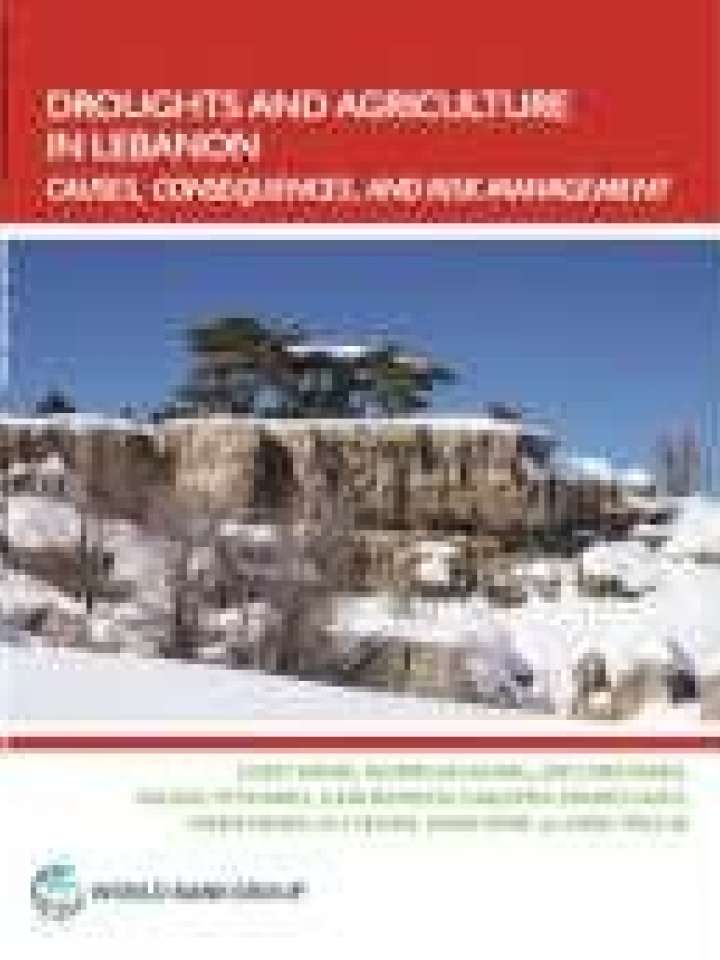Droughts and agriculture in Lebanon: Causes, consequences, and risk management
This volume examines the causes and consequences of drought on Lebanon’s agriculture. Lebanon is getting hotter and dryer. Projections show droughts will likely become more frequent and severe. Climate change, El Niño Southern Oscillation (ENSO), and the North Atlantic Oscillation (NAO) impact the occurrence of drought to varying degrees, with NAO being the biggest short-term driver and climate change being the biggest long-term driver. The drier conditions will have important ramifications on Lebanon’s agricultural economy and the wellbeing of citizens working in agriculture. Ramifications include production declines and the loss of livelihoods, among others. Drought was not considered an important issue in the country until recently. But, that view is slowly changing as a series of droughts and other extreme weather events over the past decade demanded the nation’s attention. With greater awareness of drought, public institutions slowly begin to change, moving from reactionary responses to taking the first steps towards strategic planning. Still, much more can be done. These actions include: developing a national drought action plan, establishing drought monitoring systems, improving ministerial coordination, utilizing new technologies like hydroponics and early warning systems, improving the quantity and quality of climatic data, and other actions.
The individual chapters of this volume were compiled using information from five commissioned background papers. These background papers relied on mostly secondary data sources. But, some primary data was collected as well. Through key informant interviews and focus group discussions, thirty stakeholders were consulted. They represent various research institutes, the private sector, government agencies, and civil society organizations. The purpose of this volume is to build off the 2013 book, 'Increasing resilience to climate change in the agricultural sector of the Middle East: The cases of Jordan and Lebanon (Verner et al. 2013). That book prioritized agricultural needs in Jordan and Lebanon, including knowledge generation and technological advancement. This volume adds to both topics.This report examines the causes and consequences of drought on Lebanon’s agriculture. It finds that Lebanon is getting hotter and dryer, while droughts will likely become more frequent and more severe. We see that climate change, El Niño Southern Oscillation (ENSO), and the North Atlantic Oscillation (NAO) may impact the occurrence of drought to varying degrees, with NAO being the largest short-term driver and climate change being the largest long-term driver. The drier conditions will have important ramifications on Lebanon’s agricultural economy and the wellbeing of citizens working in agriculture. Impacts from drier conditions include production declines, loss of livelihoods, and many others. Until recently, drought was not considered an important issue in the country, but that view is slowly changing because of a series of droughts and other extreme weather events that occurred over the past decade. With greater awareness of drought, public institutions have also slowly begun to change, moving from reactionary responses to taking the first steps towards strategic planning.
Explore further
